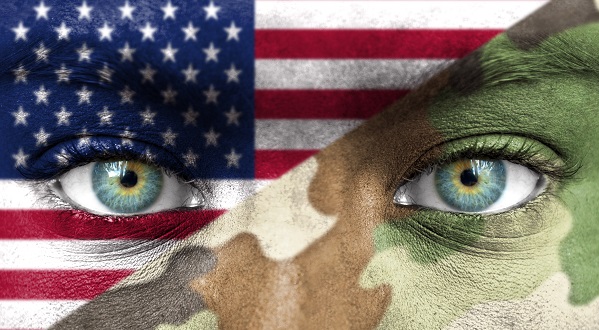Paris. Syria. Nigeria. Istanbul…
New York.
Over the past years, global terrorism has become ‘legitimate.’ Terror attacks and other shows of violence proved at one time to be almost detached, abstract, and rare, giving credence to the fact that businesses could carry on as usual. Terrorism insurance seemed absurd as history, trial and error, data, and statistics determined what “risks” really were for the middle market, and they surely didn’t include such extremes as the fallout from war, refugee migration, and bomb threats. But truth be told--the internet has done an amazing job of providing a wealth of information (in real time) about events that have essentially disrupted our standard definition of what risks really are; it has provided a resonating baseline, having the propensity to dismantle normalcy for individuals and businesses, both.
No longer are risks relegated only to market fluctuations, lawsuits, and business interruption. A more comprehensive and intimate portrayal of risk exposures are emerging from a variety of industries, including those whose operations require a clear presence in an affected country. Terror and the need for terrorism insurance (and related coverage) has enmeshed itself into the fold.
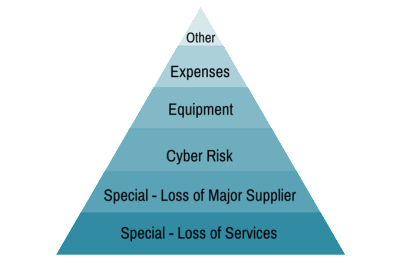 In countries around the globe, people have been affected by terrorism with a visceral intensity.
In countries around the globe, people have been affected by terrorism with a visceral intensity.
Those that trade internationally settle into the day-to-day rigors of figuring out how to grow and thrive while concurrently making important, methodical decisions about risk. These are the threats that not only affect individual lives, but the ebb and flow of business trade and integrity of successful operations. Could the formation of a captive insurance company help slow the damaging effects of supply chain breakdown? What about the loss of equipment? What of the repercussions of having to pull out of a country due to economic and political instability?
It’s important that owners of closely-held businesses concentrate on alternative risk planning, because as evidenced by global upset and the disruption of what has always been considered “progress,” there is just too much at stake.
How Captives Can Offset Financial Losses
At the most basic level, there’s a surge of panic that arises from an immediate threat that can cloud judgement, causing people to react by instinct rather than by logic. It’s the proverbial fight-or-flight reaction when the preservation of life or property is at the mercy of what you do next.
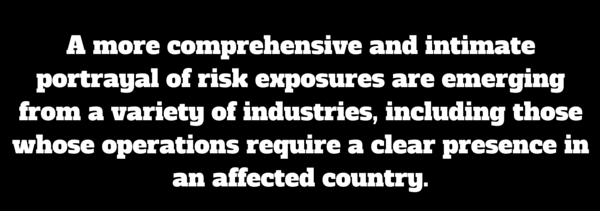
As a principle owner of a closely-held business and viewing threats at a macro level, you will likely have more time to think critically about risk mitigation and insurance. You‘ll have more than an adrenaline-charged moment to discern how to protect your supply chain, workers, assets, and the integrity of your overall operations.
It is at this juncture that you begin the conversation about proactive, preventative measures against possible threats. This might include encrypting your digital data, making it impossible for criminals to access sensitive files. It might even include vetting 3rd party vendors’ security practices.
Monitoring the dangers of traveling and working abroad should also be paramount in the business plan.
In 2011, a 71-year-old American aid worker from Rockville, Md., was kidnapped by a group claiming it was affiliated with al-Qaida. Mr. Weinstein, the Pakistan country director of J.E. Austin Associates Inc., a midsize development contractor based in Arlington, Va., reportedly was taken hostage by gunmen who broke into his home. A spokesman for the company declined to comment on the situation, or on whether Mr. Weinstein eventually was released. Most kidnappings go unreported (Source: Business Insurance).
The story of Mr. Weinstein is just one example.
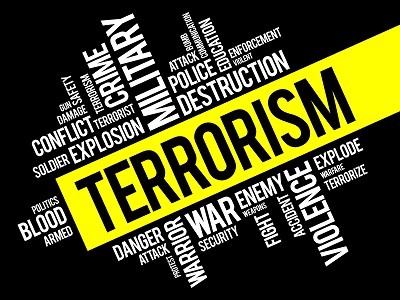 For employees working within threat-elevated areas, such as along the U.S.-Mexico border or overseas, the bar for employee protections is rising, and the concepts of adequate kidnap and ransom insurance are changing at lightning speeds.
For employees working within threat-elevated areas, such as along the U.S.-Mexico border or overseas, the bar for employee protections is rising, and the concepts of adequate kidnap and ransom insurance are changing at lightning speeds.
Failing to put protective measures in place could lead to high-profile lawsuits that test the limits of the employer’s commercial insurance policies. Another roadblock is that local regulations governing the purchase of insurance can pose a challenge to multinational corporations attempting to arrange a single, global travel accident and health care policy for employees traveling internationally (Source: Business Insurance).
This is why captive insurance is critical to the conversation. Captives are small property and casualty companies formed to insure the risks of a parent or affiliated operating company. Typically, these companies are formed as a supplemental insurance measure, covering risks outside the scope of a commercial policy.
According to the Insurance Information Institute, terrorism coverage is a public/private risk-sharing partnership that allows the federal government and the insurance industry to share losses in the event of a major terrorist attack. The Terrorism Risk Insurance Act (TRIA), which was enacted by Congress in November 2002, ensures that adequate resources are available for businesses to recover and rebuild if they are the victims of a terrorist attack. Under TRIA all property/casualty insurers in the U.S. are required to make terrorism coverage available (Source: Insurance Information Institute).
TRIA would be more appropriate for larger captives. Underwriting coverages in partnership with TRIA may result in the sharing of claim costs by the captive; most larger captive insurance companies have the budgets to withstand the high price tag. For middle market businesses, underwriting broader or specialty coverages under a captive (minus the TRIA association) which address risks such as cyber-attacks, kidnap and ransom, and others makes sense in light of today’s biggest threats.
Terrorism Insurance Rate
Amid competition, commercial terrorism insurance rates fell in 2015, especially in high-risk cities such as New York, Chicago, and Los Angeles. But in general, commercial insurers carry specialized coverages at a higher cost.
The question becomes, “Why put your business in the precarious situation where gaps in insurance equate to financial losses?” A captive insurance company provides more flexibility in the types of coverages written and many are priced at a lower cost than what’s commercially available. Additionally, planning benefits such as insurance coverage, along with ancillary benefits such as secured loans (from the captive back to the operating company), dividends within a favorable claims year, tax-deductible premiums may be available with a captive arrangement.
The captive can be considered part of a larger alternative risk management planning strategy, offsetting the costs associated with business interruption, equipment breakdown, loss of product, loss of a major vendor, and the loss of a major supplier. So opting for a captive shouldn't be considered a catch-22 when a commercial policy exists. Coverages work in tandem to provide a comprehensive program for a business.
Some owners who write coverages through their captive to protect their businesses from terrorist actions or events have come under scrutiny; mainly, the legitimacy of the risk has been called into question. In order for a captive to be compliant with its domicile and other regulatory organizations, the business it insures must exhibit legitimate risks. The truth is, the risk of a terror attack is unpredictable and volatile.
Here’s a prime example: In December of 2015, a San Bernardino, CA social services center was attacked by a U.S.-born Muslim man, Syed Rizwan Farook and his Pakistani wife, Tashfeen Malik. Fourteen people were killed in the attack. The area had traditionally be regarded as ‘safe’ and unlikely to be targeted by any extremist group. As reported by The New York Times, residents have at times felt themselves remote from the transatlantic waves of terror that have washed over New York, London, Paris, Madrid and Washington, D.C. (Source: San Bernardino Terrorist Attack Shatters Southern California’s Illusion of Safety) But yet, those affected as well as the country at large are still reeling from the reality that no one or place is immune to these types of risks.
Terrorism Insurance Coverage : Leveraging Captives
The role of the captive insurance company in the wake of terror attacks in India, France, and other countries, is to make businesses resilient; the ability to bounce back financially and operationally, continuing a forward momentum.
As explained by the Insurance Information Institute:
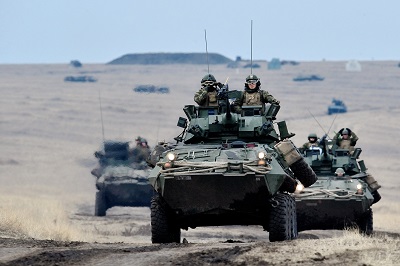 “Losses are only covered by a terrorism insurance policy if the U.S. Department of the Treasury officially certifies an event as an act of terrorism. This requires that the act be violent and be driven by the desire of an individual or individuals to coerce U.S. civilians or government. No act shall be certified by the Secretary as an act of terrorism if property and casualty losses, in the aggregate, do not exceed $5 million. The act must also cause at least $100 million in damage to be considered a terrorist attack.
“Losses are only covered by a terrorism insurance policy if the U.S. Department of the Treasury officially certifies an event as an act of terrorism. This requires that the act be violent and be driven by the desire of an individual or individuals to coerce U.S. civilians or government. No act shall be certified by the Secretary as an act of terrorism if property and casualty losses, in the aggregate, do not exceed $5 million. The act must also cause at least $100 million in damage to be considered a terrorist attack.
The definition of a certified act of terrorism has been expanded to cover both domestic and foreign acts of terrorism.”
The National Association of Insurance Commissioners is working with Congress, the Administration, state officials, and the industry to develop a long-term plan to make terrorism insurance available and affordable. President Obama signed the Terrorism Risk Insurance Program Reauthorization Act of 2015 (H.R.26) on January 12, 2015. The program was extended through December 31, 2020.
While no precise figures are publicly available to determine how many U.S.-owned captive insurers currently access the coverage, industry experts estimate up to half do so to provide a collective $200 billion to $300 billion in terrorism insurance coverage (Source: Business Insurance).
Business owners are choosing to form their own captives because the political, social, and economic tides are shifting. In years past, industries such as oil & gas were considered “at risk.” Their operations mandated their workers be present in places such as Iran, Saudi Arabia, and Turkey. But today’s interconnected economy requires partnerships with vendors, logistics companies, manufacturers, and others that operate at home and abroad. “Terrorism” in its most extreme forms may involve loss of life or property. But it can begin with something seemingly more benign, such as a “bothersome” data hack.
Businesses have an obligation to tackle risks on the front end (safety, prevention) and on the back end (sound insurance coverage). It is the only way to fully protect your business, property, and most importantly, your people.




